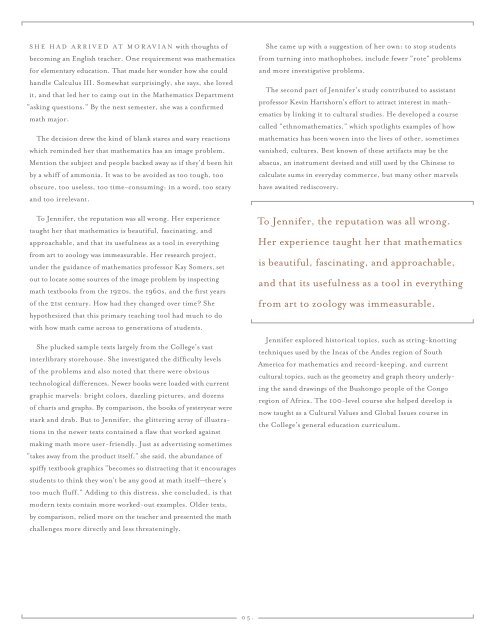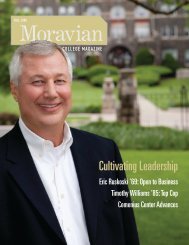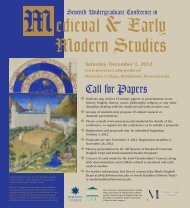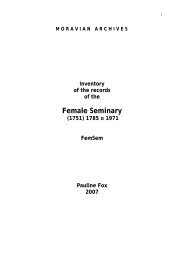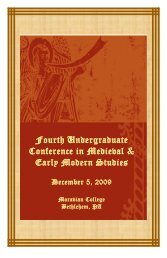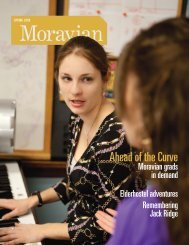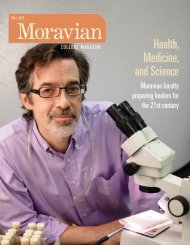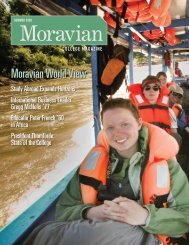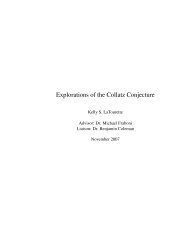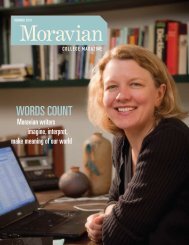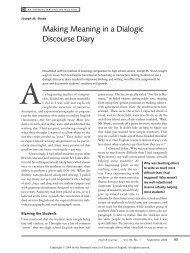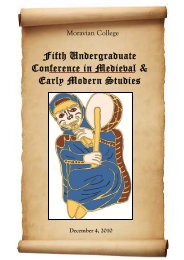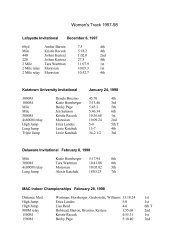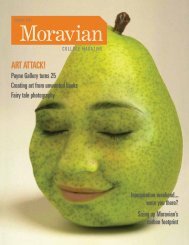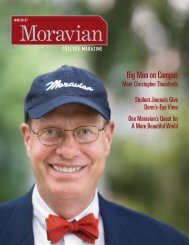Create successful ePaper yourself
Turn your PDF publications into a flip-book with our unique Google optimized e-Paper software.
She hAd ArrIved AT MorAvIAn with thoughts of<br />
becoming an english teacher. one requirement was mathematics<br />
for elementary education. That made her wonder how she could<br />
handle Calculus III. Somewhat surprisingly, she says, she loved<br />
it, and that led her to camp out in the Mathematics department<br />
“asking questions.” by the next semester, she was a confirmed<br />
math major.<br />
The decision drew the kind of blank stares and wary reactions<br />
which reminded her that mathematics has an image problem.<br />
Mention the subject and people backed away as if they’d been hit<br />
by a whiff of ammonia. It was to be avoided as too tough, too<br />
obscure, too useless, too time-consuming: in a word, too scary<br />
and too irrelevant.<br />
To Jennifer, the reputation was all wrong. her experience<br />
taught her that mathematics is beautiful, fascinating, and<br />
approachable, and that its usefulness as a tool in everything<br />
from art to zoology was immeasurable. her research project,<br />
under the guidance of mathematics professor kay Somers, set<br />
out to locate some sources of the image problem by inspecting<br />
math textbooks from the 1920s, the 1960s, and the first years<br />
of the 21st century. how had they changed over time? She<br />
hypothesized that this primary teaching tool had much to do<br />
with how math came across to generations of students.<br />
She plucked sample texts largely from the College’s vast<br />
interlibrary storehouse. She investigated the difficulty levels<br />
of the problems and also noted that there were obvious<br />
technological differences. newer books were loaded with current<br />
graphic marvels: bright colors, dazzling pictures, and dozens<br />
of charts and graphs. by comparison, the books of yesteryear were<br />
stark and drab. but to Jennifer, the glittering array of illustra-<br />
tions in the newer texts contained a flaw that worked against<br />
making math more user-friendly. Just as advertising sometimes<br />
“takes away from the product itself,” she said, the abundance of<br />
spiffy textbook graphics “becomes so distracting that it encourages<br />
students to think they won’t be any good at math itself—there’s<br />
too much fluff.” Adding to this distress, she concluded, is that<br />
modern texts contain more worked-out examples. older texts,<br />
by comparison, relied more on the teacher and presented the math<br />
challenges more directly and less threateningly.<br />
05.<br />
She came up with a suggestion of her own: to stop students<br />
from turning into mathophobes, include fewer “rote” problems<br />
and more investigative problems.<br />
The second part of Jennifer’s study contributed to assistant<br />
professor kevin hartshorn’s effort to attract interest in mathematics<br />
by linking it to cultural studies. he developed a course<br />
called “ethnomathematics,” which spotlights examples of how<br />
mathematics has been woven into the lives of other, sometimes<br />
vanished, cultures. best known of these artifacts may be the<br />
abacus, an instrument devised and still used by the Chinese to<br />
calculate sums in everyday commerce, but many other marvels<br />
have awaited rediscovery.<br />
To Jennifer, the reputation was all wrong.<br />
her experience taught her that mathematics<br />
is beautiful, fascinating, and approachable,<br />
and that its usefulness as a tool in everything<br />
from art to zoology was immeasurable.<br />
Jennifer explored historical topics, such as string-knotting<br />
techniques used by the Incas of the Andes region of South<br />
America for mathematics and record-keeping, and current<br />
cultural topics, such as the geometry and graph theory underlying<br />
the sand drawings of the bushongo people of the Congo<br />
region of Africa. The 100-level course she helped develop is<br />
now taught as a Cultural values and global Issues course in<br />
the College’s general education curriculum.


